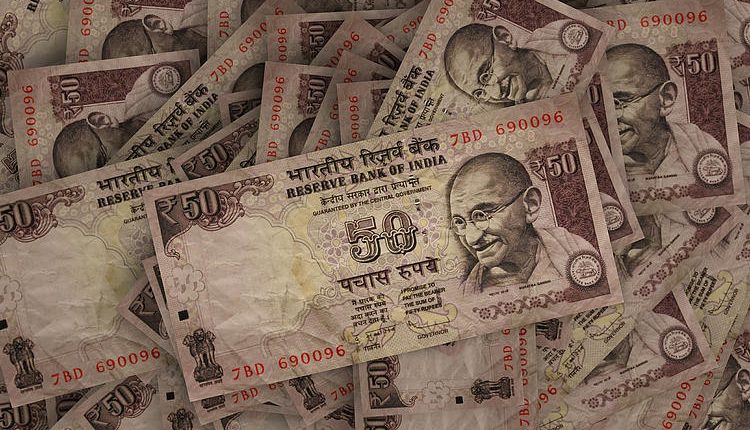- The Indian Rupee holds steady in Friday’s early European session.
- The Indian HSBC Manufacturing PMI eased in November; Services PMI improved to 59.2 in November vs. 58.5 prior.
- Continued outflow of foreign funds and higher crude oil prices might weigh on the INR.
- The flash US S&P Global PMI data will be in the spotlight on Friday.
The Indian Rupee (INR) trades flat on Friday after hitting an all-time low of 84.50 against the US Dollar (USD) in the previous session. The latest data released on Friday showed that the HSBC India Manufacturing Purchasing Managers Index (PMI) eased to 57.3 in November from the previous reading of 57.5. Additionally, the Indian Services PMI improved to 59.2 in November from 58.5 in October. The local currency remains flat in an immediate reaction to the mixed PMI data.
The significant sell-off in domestic equity markets and the rebound in crude oil prices amid the escalating geopolitical tensions between Russia and Ukraine could exert some selling pressure on the local currency. However, the routine intervention from the Reserve Bank of India (RBI), with state-run banks offering USD in the market, might help limit the INR’s losses.
Looking ahead, traders will keep an eye on the flash US S&P Global Purchasing Managers Index (PMI) data and the final Michigan Consumer Sentiment, which will be published later on Friday.
Indian Rupee remains vulnerable due to persistent outflows
- RBI Governor Shaktikanta Das noted on Thursday that robust growth in the Indian economy has provided the Indian central bank with the flexibility to focus on inflation, aiming for a sustainable decline toward the target of 4%.
- Portfolio outflows, persistent USD demand, and some concerns about a slowdown in the Indian economy are likely to keep the INR on a path of gradual depreciation, said Dilip Parmar, a foreign exchange research analyst at HDFC Securities.
- The US Initial Jobless Claims fell to 213K for the week ending November 16, down from 219K (revised from 217K) in the previous week, according to the US Department of Labor on Thursday. This figure came in below the market consensus of 220K.
- The US Existing Home Sales climbed 3.4% in October to a seasonally adjusted annual rate of 3.93 million units from an increase of 3.83 million in September.
- Chicago Fed President Austan Goolsbee said on Thursday that it may make sense to slow the pace of Fed rate cuts as inflation is on its way down to 2%.
USD/INR’s positive picture remains intact, but bearish RSI divergence teases sellers
The Indian Rupee trades on a flat note on the day. The USD/INR pair remains capped under an ascending trend channel. However, the bullish outlook of the pair prevails as the price holds above the key 100-day Exponential Moving Average (EMA) on the daily chart. Meanwhile, a correction or a further consolidation cannot be ruled out as USD/INR made a new high but the 14-day Relative Strength Index (RSI) did not make a corresponding new high, as indicated by the bearish RSI divergence.
The first upside barrier emerges at the all-time high and the upper boundary of the trend channel of 84.50. Any follow-through buying above this level could pave the way to the 85.00 psychological level.
On the flip side, extended losses below the lower limit of the trend channel of 84.36 could expose the 84.00-83.90 zone, representing the round mark and the 100-day EMA.
RBI FAQs
The role of the Reserve Bank of India (RBI), in its own words, is “..to maintain price stability while keeping in mind the objective of growth.” This involves maintaining the inflation rate at a stable 4% level primarily using the tool of interest rates. The RBI also maintains the exchange rate at a level that will not cause excess volatility and problems for exporters and importers, since India’s economy is heavily reliant on foreign trade, especially Oil.
The RBI formally meets at six bi-monthly meetings a year to discuss its monetary policy and, if necessary, adjust interest rates. When inflation is too high (above its 4% target), the RBI will normally raise interest rates to deter borrowing and spending, which can support the Rupee (INR). If inflation falls too far below target, the RBI might cut rates to encourage more lending, which can be negative for INR.
Due to the importance of trade to the economy, the Reserve Bank of India (RBI) actively intervenes in FX markets to maintain the exchange rate within a limited range. It does this to ensure Indian importers and exporters are not exposed to unnecessary currency risk during periods of FX volatility. The RBI buys and sells Rupees in the spot market at key levels, and uses derivatives to hedge its positions.
Read the full article here

